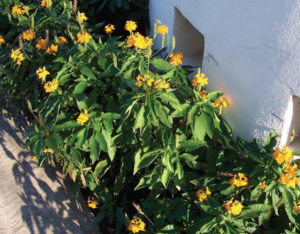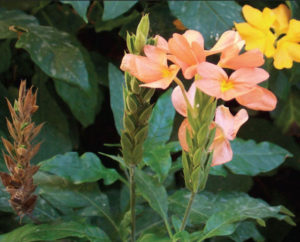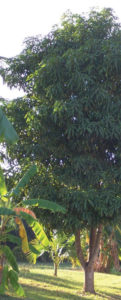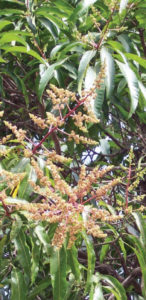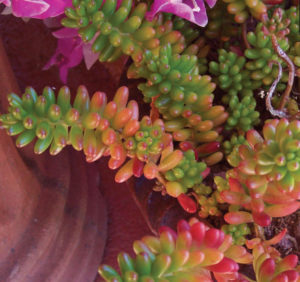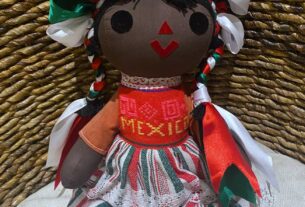Common names, scientific names, use and care, cultivation and propagation tips, flowering habits, history and little-known facts for the curious tourist or resident.
Crossandra (Crossandra infundibuliformis)
Family: Acanthaceae
Alternate Names: Firecracker Flower. The scientific name is from the Greek, meaning “fringed antlers.”
Use: This tropical shrub is originally from India but is widely cultivated for its beautiful, long-lasting flowers. It is often planted as a low growing (to 3 feet) border and can be grown as a houseplant or hothouse plant anywhere.
Flowers: Crossandra’s showy salmon-pink to yellow or orange-red flowers in terminal racemes bloom atop a shrub of glossy green leaves. This is a well-shaped bush with a long flowering season.
Cultivation: Crossandra’ thrives in light, fertile, acidic soil that is well drained. Keep the plant moist, and cut it back after flowering. It does well in a sunny, sheltered, warm place, or indoors, with bright sunlight.
Propagation: The plant is propagated by seed, or by cuttings rooted in a peat/sand mixture.
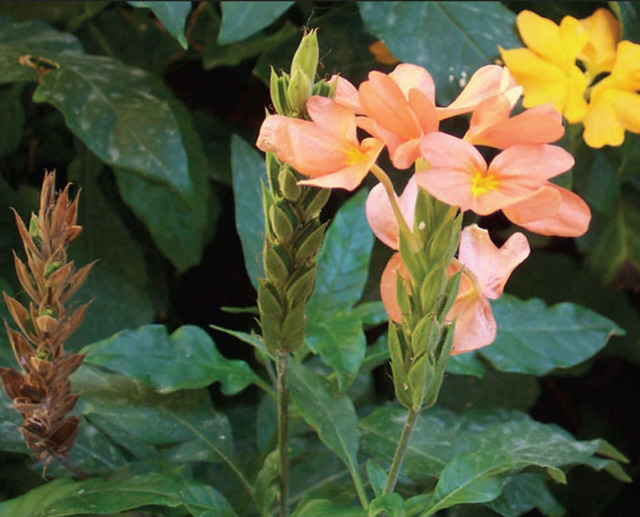
Mango (Mangifera indica)
Family: Anacardiaceae
Alternate Names: Peach of the Tropics, King of Fruits
Use: The mango is a member of the cashew (sumac) family. It is a handsome upright landscape tree which produces an abundance of edible fruit.
Flowers: At the branch tips, curved upward-pointing panicles of tiny pink flowers appear, each one with four or five petals. These are followed by the heavy, slow-ripening 6-inch fruits.
Cultivation: Found throughout tropical and sub-tropical climates, the mango requires a warm climate and abundant moisture, but can tolerate a dry season of several months. It grows best in full sun. It may reach 100 feet tall in Southeast Asia, but generally less than that in Mexico.
Propagation: Ordinary seedlings bear well, although the fruit may be somewhat fibrous. The improved mango varieties are grown from cuttings and are free of fiber.
Note: Mango leaves have a turpentine odor when crushed.
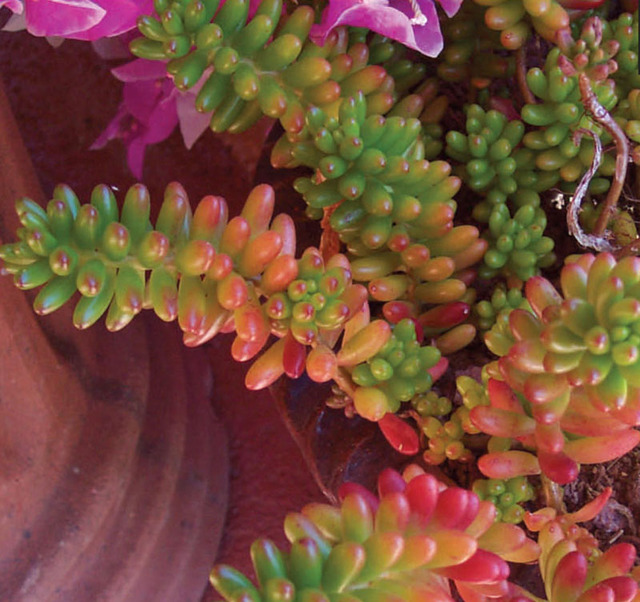
Jellybean Plant (Sedum rubotinctum “Aurora”)
Family: Crassulaceae
Alternate Name: Pink Jellybeans, Christmas Cheer, Pork and Beans
Use: This Mexican native is an excellent ground cover for hot, dry areas, can also be container grown, or used as an indoor plant, providing it receives at least four hours daily of direct sunlight. Plant the jellybean in its permanent place, as it loses leaves when moved.
Flowers: Yellow flowers are borne amidst the leaves.
Cultivation: This hardy plant tolerates a wide variety of soils, and part shade to full sun. The more light it receives, the more brilliant its color. One of the small succulents that are easiest to grow, it is drought tolerant, but not at all frost tolerant. Water this plant weekly in hot weather, less often as the weather cools, cutting back to once a month in the coolest season. For the best appearance, provide full sun and good drainage. Check the plant often for mealy bugs.
Propagation: New plants spring up from leaves, or “beans,” which drop off.

